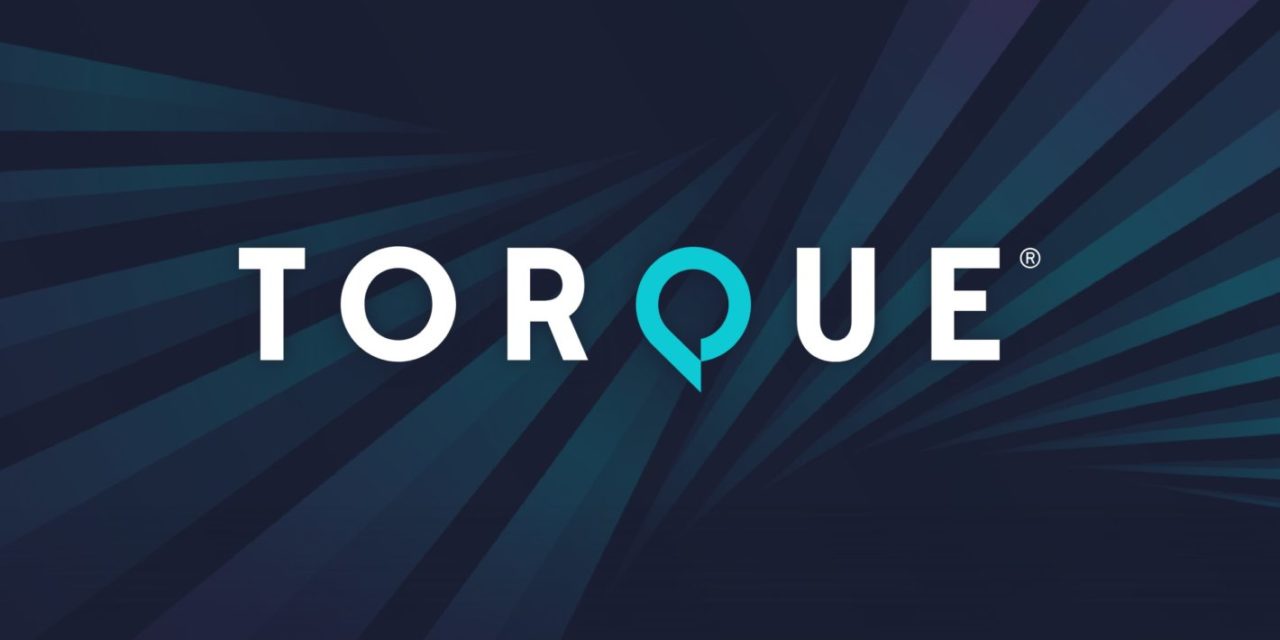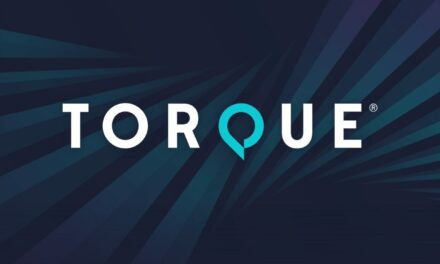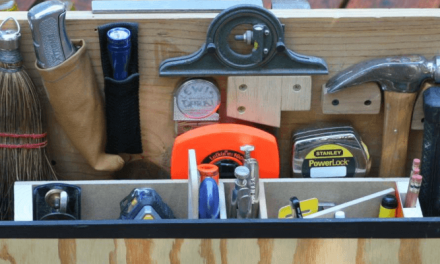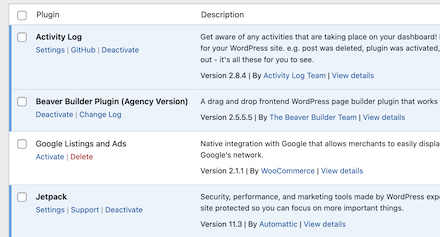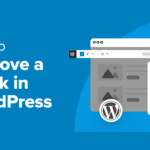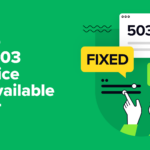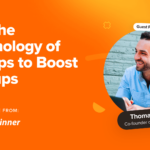Welcome to Press This, the WordPress community podcast from WMR. Here host David Vogelpohl sits down with guests from around the community to talk about the biggest issues facing WordPress developers. The following is a transcription of the original recording.
David Vogelpohl: Hello everyone and welcome to Press This the WordPress community podcasts on WMR. This is your host, David Vogelpohl, I support the WordPress community through my role at WP Engine, and I love to bring the best of the community to you hear every week on press this as a reminder, you can find me on Twitter @wpdavidv, or you can subscribe to press this on iTunes, iHeartRadio, Spotify, or download the latest episodes at wmr.fm. In this episode we’re going to be talking about something that is near and dear to my heart, which is the notion that I can’t do my job. The idea of quickly collecting client content and site information and joining us for that conversation really excited to have someone here from coming content snare I’d like to welcome James Rose, James welcome the Press This.
James Rose: David That’s really cool to be here. I gotta say it’s pretty close to my heart as well.
DV: Nice, nice. Nice I Remember my agency days this was always a struggle as I as I worked on the client and had to get information everything from like the content for the pages to even just simple things like their SMTP info or hosting account info things like this. And I remember getting so bad like some clients, I would never even get it, have to like just abandon the project altogether so like, that’s why this is so like emotional for me this topic, but I think there’s a lot of folks listening because I share the same frustrations, really.
JR: It’s very, very common theme in London freelancers and agency owners for sure.
DV: Totally, totally. So really, really excited for this. I think there’s probably a lot of people out there right now and I think I put this in the show description is like, you have time you’re waiting for clients to send you stuff, listen to this. I guess we got to deliver on that James. Alright, let’s kick us off. I’m asking the same question I asked everybody else in the beginning I’m really curious about it, I actually don’t know this about you but briefly tell me your WordPress origin story. When was the first time you use WordPress.
JR: Yeah, I think it must have been around 2007 or eight. I was this before agency days before we’d built any software, it was during the quote unquote AdSense gold rush. When you just knocked up, cheap, cheap sites to to try and rank them on Google and then make money off AdSense, I think I had, I don’t know at one time probably 15 websites that I built with full of AdSense and content. Yeah, and obviously, I realized at some point, those sites pretty rubbish you retired now isn’t, isn’t get rich quickly. I was doing okay as a as a psychic you know as this kind of thing I was doing at night. So I have my real job, my daytime job as an engineer. But that’s I mean that’s what kicked off my entire business career so it does hold a spot in my heart, you know, even though it was building terrible websites.
DV: What were you doing before 2017 Doesn’t you said you were an engineer like as a software engineer like control systems
JR: automation so easiest way to describe that’s probably creating interfaces for humans to control machinery control machines and pump stations and stuff like that yeah,
DV: I’m not I’m probably misquoting here but I believe Tonya Mork has a similar background but we’re from like the military perspective. Remember she was really into control systems, I’m not sure if you’re familiar with her but she’s had a lot of people to develop WordPress sites, since 2007 2008 You’re not working in websites, or, you know web software and that way. And this is right around the time when widgets and shortcodes were introduced to that matter to you at the time or were you just like building a website and WordPress was a name.
JR: You look it wasn’t. I was definitely using widgets for sidebar stuff, because that’s where you put the ads. So I definitely remember using that using widgets, sorry, I don’t remember, caring too much about shortcodes at the time, you know, we, Once we built the agency which was later on in 2014 Obviously all of this is much more important.
DV: Okay okay got it got it got it so kind of a means to it in there for your your AdSense arbitrage strategies. I remember those days quite well. You said you found an agency in 2014 but your current focus in your business is around content snare is that correct, yeah that’s what is what is a content snare.
JR: That says L. SAS product was originally targeted at freelancers and agencies to collect website content from clients and that that was born out of frustration, we’re getting website content from clients. I think we also need no it wasn’t just us that had that problem obviously like we were saying everyone’s kind of got their story but I interviewed a whole bunch of designers locally as well, of course, pretty much all of them use WordPress, I think actually often did. And every single one of them focused on that same problem as being the biggest bottleneck in their business, you know that wasn’t without that was without me prompting, I wasn’t going, Oh, he’s getting content a problem now I was just saying like step me through your process where are the pitfalls and that was the biggest thing that came up with everyone.
DV: Yeah, I know a lot of people share that frustration and we know we’ve covered quite a bit on press this notion of kind of businesses evolve product is is evolving of agency businesses so that’s good to hear. You kind of had that very intimate knowledge and experience with the pain point you ended up there addressing the contents there. So I’m just curious like. And, you know, any related contents there are generally just like, what are the common kinds of information that you think agencies need to build the clients they like what’s in this. What’s in the sphere of content like I was talking about things like access info and stuff but like how do you think about.
JR: Yeah, so there’s two typical ways we see people collecting content or information doesn’t have to be content. One is when the client does not actually write the final copy. So instead, it’s more of like a creative brief process where they collecting information from the client that someone, you know, a copywriter or someone on the team is going to use to convert that into the final copy. So, and that can be a mix of actual content, and, you know, questions, you know, tell me about your business, tell me about your services, whatever and someone’s gonna rewrite that into the content, but then you might also be collecting team bios and headshots and, you know, logins and all that sort of stuff which is very much stuff that’s going to be used directly on the final sight. So that’s like the first process we see people going through, and the second one is yeah just direct the client writes the content for the for the website and obviously that’s, I mean for most people that’s just pages right just very rarely blog post, but some people collect blogs too, I guess, trying to work out when you, when you say types of content that’s
DV: because like in the beginning of the interview I kind of had mentioned, you know, the notion of things like authentication information into their sites you can migrate it into your development environment start where do you feel like, Like, you think of that type of information and when you think about getting content from customers where is this. Okay so that’s it would be like part of that bucket is like the information from a systems perspective that you need to get going.
JR: Yeah, the real, the thing is, anything that you’re going to ask clients for in an email, or Google Doc or a form or something where there’s quite a bit of information that you need that. That’s what people use contents now for so I mean we’re not just context notes for anything. So, you know, a lot of times there’ll be an email that says, Can you answer these five questions and then fill out this Google Doc or gon fill out this form so you know there’s multiple channels, usually and it’s made up of all kinds of things that can be logins, you know some people, you know, more security conscious someone else collect logins via the phone, sometimes you know just to keep, so the passwords not being shared,
DV: I’m right there with Yeah, or password managers like that kind of thing.
JR: Yeah, yeah, so, you know, there’s usually multiple channels to bring in all that information but the other the second time, you know there’s plenty of agencies out there that it’s more about volume than it is sort of bespoke websites, and they just collect the direct content from the client that like, I want your about page content, your contact page content you know home, you know, all that sort of stuff, just directly from the client.
DV: Okay so it sounds like there’s kind of roughly three buckets like the client are kind of three approaches the client is going to give you a brief or answer questions and you’re gonna write your team’s gonna write the copy, the second node I guess the client is writing the copy, and you’re implementing it in the experience in the website. And then I guess the third class would be just like a general like systems and other stuff you might need to complete the project. Yeah, okay. In summary, it sounds like being like, really holistic and how you think about it because I mean obviously we’re kind of building up to like well how do I get this stuff faster, but it sounds like just like holistically thinking like it might just be more than just like literally the website.
JR: Yeah, and honestly that’s actually been a lot of people dying sort of make that connection they use content snare for the website content and then go oh wait, you know, I can use this for onboarding and just normal info well yes it’s a form, you can basically form a special kind of form that you can collect whatever you want. And it’s quite funny because I have I’ve had this product for five years or whatever at this point for years, and I was working on an automation, consult or implementation of like Zapier. I don’t know how many people are familiar with Zapier, implementing processes and automations in this woman’s business, and I sent her a question list with like 20 things in it, and I was like what am I doing. I have a product for this, why am I sending an email.
DV: I could i like it it’s it’s really I guess maybe info snare doesn’t really roll off the tongue like I’m being open minded about what this information is I want to dig into though, like, like, what are the hardest parts and then kind of building up to like how to resolve them. We’re gonna take a quick break. We’ll be right back.
DV: Everyone, welcome back to Press This WordPress community podcast on WMR. We’re in the middle of our episode covering quickly collecting client content and Site Info joining us that conversation is James Rose content snare, James. Before the break, you were kind of talking about like the different modes and types of information that agencies and freelancers will collect for client projects you talked about the clients writing the copy the client isn’t writing the property, copy and then like just this general and more broad notion of info you might need to get up and going, in your view, what is the hardest type of information for clients to provide and why do you think it’s so hard to do that.
JR: Yeah, it’s, it’s going to be copy, it’s always copy. If you’re collecting the exact wording that you want to use on the website that’s by far the most difficult that’s because they’re not copywriters, they often don’t understand, I mean it took me 10 Probably five, six years, a good part of my career in business so far, given that I was engineer, it’s probably taken me more than half of that decade to unlearn. How to Sell the engineers and to learn how to sell to the rest of the population. And that’s kind of how I see clients as well you know they’re doing, they’re not good marketers, they’re not good copywriters, a lot of the time so for them it’s very difficult to to craft copy, without a good level of guidance, you know, anything that’s going to appear on the website directly his clients can often struggle with everything else like answering questions. What are your products and services, of course that’s easy for them. You know, maybe some of the harder questions are things like, what’s your, what makes you better than the competition, and they’re obviously good things for them to think through, but the hardest thing is you, if you go and say, give me your homepage content. That’s always going to be difficult for a client.
DV: Is it a writer block level of difficulty or is it more like they give you a copy and you just have to like completely redo it or going back and forth all the time or is it all of that.
JR: It is all of that, I say, the most common story I hear is just that it has to be completely redone, though, whether it’s too long, or they don’t give you enough you know the write a headline is three sentences long, although the right, and about blurb it just goes on and on and on, or was just copy that doesn’t really sell the business well enough.
DV: So it’s like when they they it is either writer’s block or top maybe time is another blocker for them. Yeah, or they’re giving it to you in a format that’s not usable or not going to achieve their outcomes. And so you’re having to go back and forth. First I mean she dies looking at this today but like, you have this kind of back and forth and what kind of slow you down and like queue up your margin and stuff and. And so that’s a big challenge any other like main areas and then I want to kind of get into some of the ways that folks can go about collecting it, were easily.
JR: Yeah, we other thing that people struggle with the images. So, often clients don’t have professional photography or whatever for their website so you have to resort, a lot of people resort to stock photos which isn’t the greatest, but even just general images that you think the client should have like a logo and the amount of times I’ve heard a story of where they’ve asked the client for a logo and they get some like 14 pixel high thing. They can’t use, so definitely images are a pain point as well.
DV: My only person who had trouble getting like SFTP and hosting authentication information like I thought I was like every project I would call my project managers and like, why have we started this, or like we can’t get the site, like is it am I the only one. Oh no, no, definitely not. Give someone a $2,000 deposit back because they could never find any other admin.
JR: Yeah, it’s just like really definitely happened to me too. I had many clients where they couldn’t remember their domain login or whatever couldn’t remember their hosting org and all that kind of stuff yeah that was a big issue for sure. The my favorite ones were when they were working with an IT company that held their hosting and I could just go to them and say, can you tell me where everything is, please.
DV: Yes, yes, you know, you know what I felt like and I didn’t get to take advantage of this as my agency days as much because they just came out with these was is the migration plugin. Like, I feel like the migration like everybody has that the admin access like I feel like that’s a given with the space but
JR: maybe you know what that they, that has saved my life many times where I couldn’t get anything else. But we were planning on like shifting from some old rubbish hosting. So, then we could go in there with the migration plugin and rip everything else out that we needed.
DV: Yeah, that’s, that’s, that’s really I wish I’d had that lever back in those days, it definitely can become an issue. Sure, okay. So I quit, I’ll quit harping on things that are important to me. So I’m like shell shocked that I think. But what is an example of, you know, how agencies get it wrong when collecting this information, like, I don’t know if I had a system I just kind of, you know, DM my PMS and ask them like do we have it yet. Not yet, like, what are what like what was I doing wrong or what others do wrong when they try to collect this.
JR: Yeah, so the biggest, I guess maybe the easiest way to start is by seeing explaining what we’ve seen work in getting content faster. And that is creating a really good level of guidance and instructions of what the client should do so it’s a break, or sorry, I should back up a little bit to break it down into pieces as well. Right, so the classic awful way of doing things is sending someone a Google Doc that says homepage content across the top, and saying, Mr client, please give me your homepage content in this Google Doc, and of course they have no idea where to start, you know, that’s obviously the worst possible example.
DV: But one page is the worst example I feel like the whole website through the content is the worst, because you’re saying like, one page is like, like part of the page is as follows, sir.
JR: Yeah and I mean like the blank page bought like the fact that, you know, that’s, that’s just the words because they don’t like the biggest thing to remember is a client can’t visualize the web as well as you can when you know as a web designer or marketing person, you’ve probably got a pretty good picture in your mind of what a website’s going to look like, how it’s going to function you know you building this picture as you talk to the client the client might have a bit of an idea but nowhere near what you do. So if you go and send them a page that says what your homepage content you know they’re just not going to know where to start, we’re going to write the wrong things, stuff that’s unusable for you. So the two things are breaking it down into chunks so that could be okay now we’re going to do the header section, and then within the header, we’ve got a headline, we’ve got a could be a hero image could be a video, whatever you’re planning on putting on the site. It could there’s probably going to be a subhead, or and a button, you know, where does the button go, let’s say that you know so just actually breaking it down into little pieces that you’re going to need from a client. And then, then, providing some guidance on how to fill out each of those little pieces of information. So, you know, don’t just say, I need a hero image of what’s the hero what should be a hero image should be something that shows the client after they’ve used your services, it’s like the end state of where they going to be after they use your product. You know it needs to be at least 2000 pixels wide, you know actually specifying what they need to do, just for that image for example and then for the headline it’s like it should be six to 12 words no fluff, say what your, say what you do and as in what the benefit is as short as few words as possible, and maybe even linking out to a guide on how to write headlines. So, the more instructions, obviously without going crazy, but the more instructions you can give people the more success you’re going to have, that’s the biggest thing we find in people that are successful with even a tool like contents that is the amount of help, they try to give it to their clients amount of guidance. So, you know, and then the the level above all this coming on from the fact that clients can’t visualize as well as you, is to actually put a mock up or a screenshot in so this is what the head is going to look like this is where the image is going to be displayed. This is where the headline is going to go, all that kind of stuff was going to be a wireframe doesn’t have to be a final mock up, so obviously you probably haven’t finished the website at this point of the build. But as long as you’re, you make it very clear that the final website is not going to look like the actual wireframe, because clients will definitely assume that I’ve seen before.
DV: Yeah, it’s funny you mentioned that, like, I mean I think this is really good advice, just in general, thinking back and I was just kind of replaying some of my old projects in my head is energy talking and I would build the page in my head and it was very clear what we were building to me but it wasn’t to them. I think I probably spent a lot of time assuming that they saw it the same way and they didn’t. You know it’s funny that you mentioned the wireframes and providing the imagery along with a copy I think I see a lot of people do that as well where it’s like, here just put it in this dock and have no concept of visually how it’s going to work. And I definitely see clients getting caught up in that in terms of like, providing the wireframe I’ve had that I’ve had that had that turned out bad I think sometimes too early work, and in the future just depends on the client, you know, like whether they, whether they’re comfortable in that messy middle or not. Yeah. But yeah definitely can cut both ways I do want to dig in a little deeper there we’re going to take our last break. We’ll be right back.
DV: Hello everyone welcome back to Press This WordPress community podcasts on WMR we’re talking to James Rose about collecting client content and Site Info, right before the break, James you’re talking a little bit about really how to how to go about collecting client info in the right way. And you talked about breaking it down, you talked about providing guidance on each piece of content down to like character counts and like advice on how to pick your images and stuff. And then right before the break, you were kind of getting into like you’re saying like shear the wireframe, and like that cuts both ways right as I was saying before the break, like, is that what you’ve experienced.
JR: Yeah, so, if none of this is blanket advice I mean, making things easier for your client is blanket advice, so you know that’s what the writing it down and and guidance is, you know, everyone should be doing some level of that, that the core principle is making things as easy as possible for your clients. And for some clients, a wireframe works you know they can look at that and and visualize maybe how the clients least How the website is going to be laid out and then they know where the headlines going to go and whatever, but some clients really struggle with wireframe see right, and it really depends on if you’re willing to be flexible in your process. Some people it’s just their process, you know, we wireframe the website, then we collect the content. And it’s too bad if the client can’t work it out but I mean, I feel like education goes a long way here, so if you have a little video that goes along with your process for the client, and you actually step them through the process and explain how the wireframe works and how it’s not the final website that goes really long way you know this is just part of the guidance piece again. But there’s, you know, I feel like a lot of people avoid video because it’s difficult, it adds like an extra thing they have to do but there’s a lot of things
DV: that are easier about it I think it’s like you don’t have to type out the instructions you can just like talk into a camera and microphone and like for instructions. We’re gonna necessarily have to have like a super high production value video actually be very helpful.
JR: Yeah 100% Especially with something like loom where you click the button and you’re off and you’re recording. So that’s, and that’s why we accept loom videos directly into content snare in instructions areas, because it’s just we Vimeo and YouTube have that extra layer, we’ve got to upload something, whereas loom, you just click the button. Talk to the client, you can make a personal video for directly them, you know, showing them their exact wireframes and questions that you’re asking, with your face on it or it doesn’t have to be you can be screen sharing your voice, and then just embed it, and they can watch it, and they got to be in a much better position than, you know, if you just throw them, the questionnaire and say fill this out.
DV: That’s cool. You have the loom integration I haven’t used that platform for video that sounds cool, check it out. What other special things you have in content snare, like I’ve heard you talk about like, things like providing guidance on like the number of characters that they should fill out is that like kind of features and contents here help me understand like what are some of these specialized virtues y’all take to help agencies and freelancers achieve his outcome,
JR: yeah okay so the biggest way to think the easiest way to think of contest there is like a form cross Google Doc. So you lay out the different pieces of information that you need like a form, but it’s the saves everything on the fly like a Google Doc, so you know you can say put a headline here put an image here and as soon as it’s uploaded it’s locked in at save so if they close the window and come back later it’s still there, which is the big downside of using a form for this kind of info is so the guarantee they’ll lose their information, which we can get into later if you want to talk about some other ways to collect this besides contest now but the curious about contents here for sure, go ahead. Yeah, so the main features that I mean the people seem to love the auto saving thing so it’s kind of like a free flowing dog. But also, you can limit each piece, so if it’s an image you can say this is the minimum dimensions will allow the maximum dimensions, if you’re uploading a file you can say these are the file types we allow and how big it’s going to be with text yeah it’s like character length or word length like word count. That, that it will allow from them. So these are more like restrictions on each field, whereas the guidance is just every single question. We have a full rich text area where you can provide guidance on how to fill that piece out. So, and that that takes images, that’s weak wireframes and or examples, you can take videos like loom Vimeo and YouTube, and obviously just full rich text, that’s really a little checklist in there and say these are the things you need to cover in this blurb, you know, then there’s about blurb, and this is how long it needs to be, and then they just fill it out on their own time and the final, I guess feature that people really love with automatic reminders so it’ll actually keep chasing them until they’ve done it.
DV: I like it I like it. Why did he found this when I was running my agency do it. I’ve heard this many times. Oh my goodness. Well I hope those listening I’ll check it out and maybe get some value out of it, it’s not the sound advice I think you’re given here today in this interview James Thank you so much for joining us today.
JR: David It’s been a pleasure. Thank you very much for having me.
DV: Of course of course for those listening if you’d like to learn more about what James is up to you can check out contentsnare.com. Again, this has been your host, David Vogelpohl. I support the WordPress community through my role at WP Engine, and I love to bring the best of the communities you hear every week on Press This.

